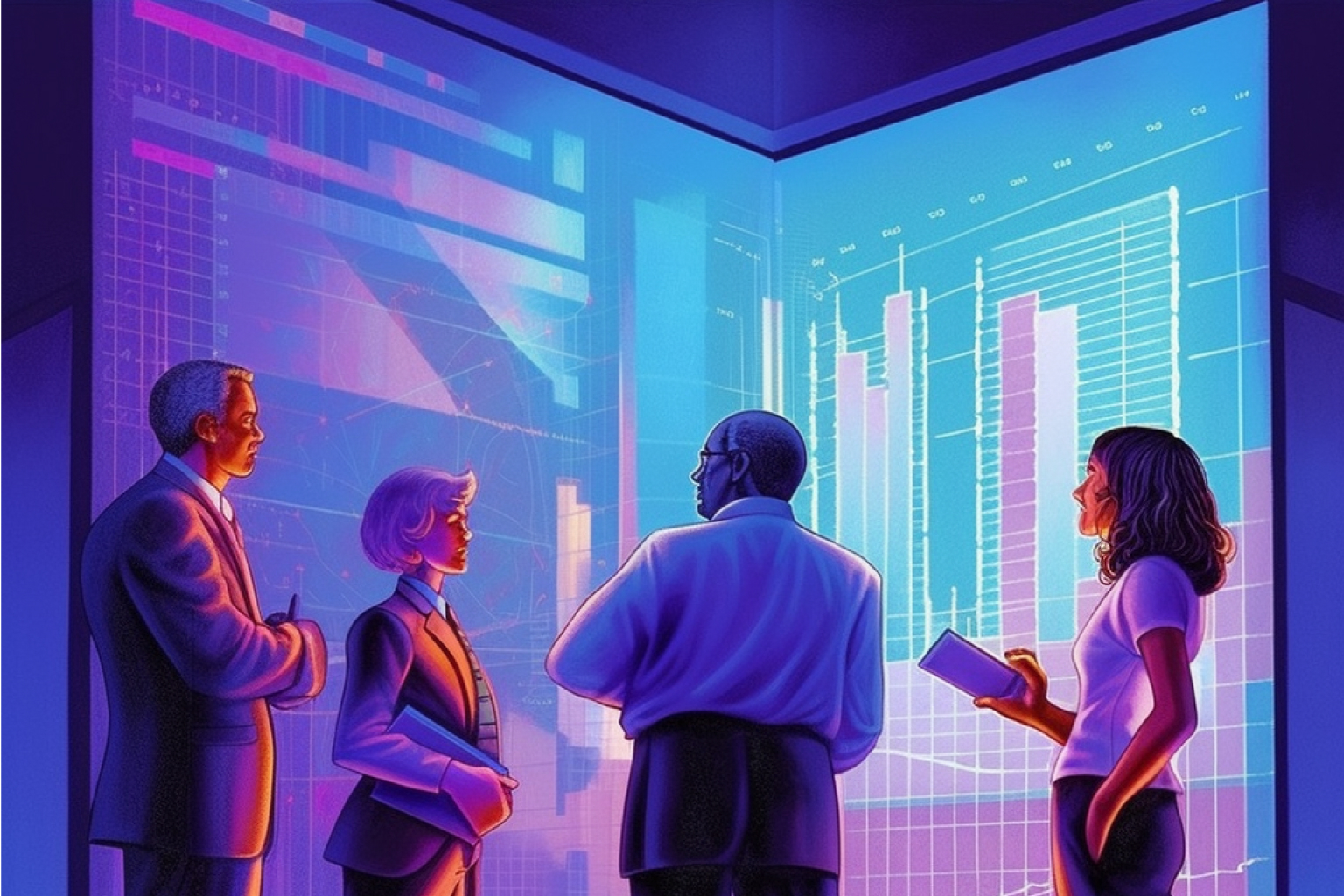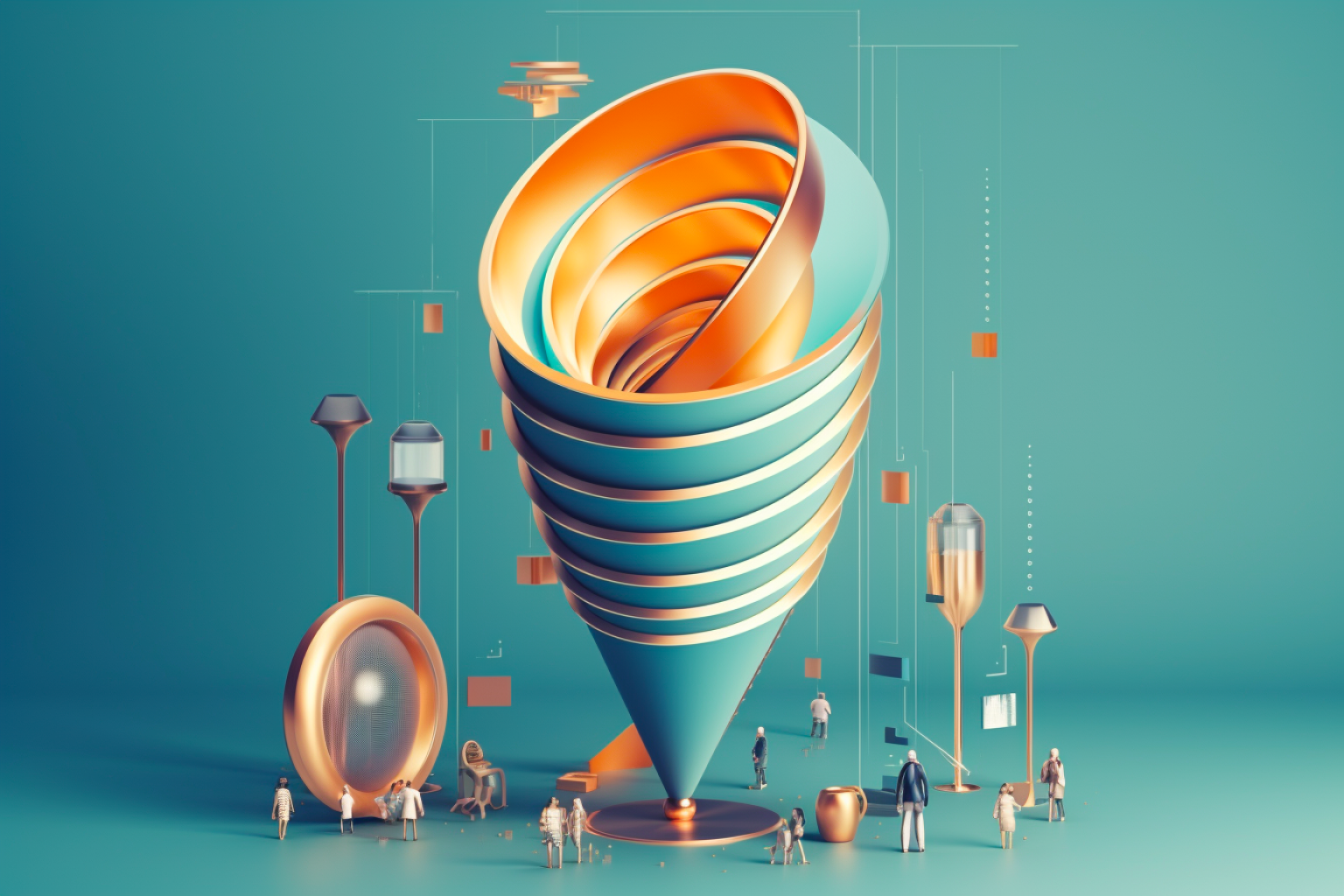Outline
- Introduction
- The history of the marketing funnel
- The evolution of the marketing funnel
- Optimizing each stage for business growth
- Final word
Subscribe
The marketing funnel is a cornerstone of marketing. It offers a way to visualize the path customers take from brand awareness to conversion, and helps businesses identify where leads and customers are lost.
Like all things that have been a mainstay of marketing, the funnel has been the subject of many debates and iterations. In this article, we'll take a look back at how the funnel has evolved. Take what you need and leave what you don't to build a strategy that serves each stage of the funnel in succession.
The history of the marketing funnel
At the turn of the 20th century, agency owner and future advertising hall-of-famer, Elias St. Elmo Lewis, developed the AIDA model that mapped the stages of a customer’s relationship with a business. Those stages were as follows:
Awareness: The prospect becomes aware of their problem and potential solutions to it.
Interest: The prospect expresses interest in a particular group of products or services that solves their specific problem.
Desire or Decision: The prospect shows interest in a particular brand or product and begins to evaluate whether it meets their needs.
Action: The prospect decides whether that brand or product meets their needs. If it does, they become a customer. If it doesn’t, they continue to evaluate until they find a brand or product that does.
In 1924, William H. Townsend combined the AIDA model with the funnel concept and the first marketing funnel was born:

At the ‘awareness’ stage, you have prospects who are typically looking for a solution to a problem. Some will make it to the ‘interest’ stage after deciding your class of product can solve their problem, while others will drop out and choose another class.
Then the prospects within the ‘interest’ stage will research the various options available to them (i.e. they’ll weigh up your product against the competitors) and fall into the ‘desire’ or ‘decision' stage. From there, a number will take action and become a customer.
A strong marketing strategy will bring high-quality prospects into the funnel at a high volume, and successfully nudge a large proportion of them through each stage until they take action.
The evolution of the marketing funnel
This basic iteration of the marketing funnel has undergone drastic changes since its conception in 1924. Here are some of the more popular iterations that exist today:
ToFu, MoFu and BoFu
Where there are marketers, there are acronyms. “TOFU” (top of funnel), “MOFU” (middle of funnel) “BOFU” (bottom of funnel) are all referring to different stages of the marketing funnel:

TOFU - Awareness Stage, where your potential customers are learning about your brand and the specific problems that you solve.
MOFU - Consideration Stage where a customer has identified their problem and is looking for a solution. They may have heard of you, but need a bit of coaxing into deciding that your brand is the right fit for them. They need to be convinced.
BOFU - Decision Stage. This is where your brand needs to persuade your potential customer to move through the final step of the sales funnel and convert.
The buyer’s journey
In this three-stage model, the ‘interest’ and ‘desire’ stages from AIDA combine to form the ‘consideration stage.’ The ‘awareness’ stage remains the same (as it does in most models), and the ‘action’ stage is identical to the ‘decision’ stage in all ways except the name.

The customer experience funnel
In this version, you’ll notice two additional stages to the original funnel: ‘loyalty’ and ‘advocacy.' These were added because modern businesses realized the importance of customer lifetime value. A positive customer experience beyond the ‘action’ stage results in better ROI and a more sustainable business. When loyalty turns into advocacy, the funnel becomes partially self-serving — in other words, existing customers are adding new customers into your pipe. This, again, powers growth and results in a more sustainable long-term business model.

The hourglass
The result of combining the traditional funnel with this upside-down ‘customer experience’ funnel is now referred to as the ‘hourglass’.
Where the sales and marketing funnel finishes, the customer support funnel commences, creating an immersive experience for your customer. Once the sale has gone through, the next stage is turning your customers into advocates, which in turn will lead generate more customers.

Optimizing each stage for business growth
Each stage of the marketing funnel is reliant on the success of the one that comes before. This means that you need to be thinking about advocacy even when you're generating awareness — otherwise, you risk attracting prospects who never convert or customers who don't stick around long enough to have a positive ROI.
Keep this in mind as you go through each stage and identify goals, content offerings, and KPIs.
The awareness stage
It’s the stage in which your prospect first becomes aware that they have a problem and starts looking for a solution.
Your prospect’s goal: To put a name to their problem and begin determining possible solutions. For example, if they’re befuddled by taxes, then maybe they’re considering hiring a CPA or purchasing do-it-yourself tax software.
Your goal: To position yourself as a worthy solution with a clear USP, and to prove your authority with educational content. This will generate website visitors and turn them into email subscribers or MQLs (marketing qualified leads).
The best content to offer: Blog posts, website content, webinars, guides, social media posts, email newsletters.
Key performance metrics to track: Website traffic (visits, unique visits), social reach, email subscribers, inbound links, referrals.
The consideration stage
Of all the stages in the marketing funnel, this is the one that gets morphed most from model to model. In AIDA, it’s divided into the ‘interest’ and ‘desire’ stages. In the hourglass version, it’s separated into the ‘like’ and ‘trust,’ stages. The reason behind the discrepancies is the space it occupies in the marketing funnel.
If the funnels above were drawn to scale, the consideration stage would be much larger than the others. It can take weeks and even months for prospects to evaluate a business’s authority and its capability to solve their problem. During this time, it’s crucial you guide them to that decision with helpful content.
Your prospect’s goal: To determine which class of products or services can solve their problem, then to begin evaluating businesses within that class. Let’s go back to the tax example, the prospect has decided to use a DIY tax software solution over hiring a CPA. Afterward, they’d start evaluating specific software, for example, TurboTax or QuickBooks.
Your goal: To nurture your leads with strategic emails, blog posts, and lead magnets to prove your business is an authority capable of solving their problem. Since this stage is also where the marketing team hands off leads to the sales team, interdepartmental alignment on messaging is crucial to ensure product fit — without this, you risk attracting customers who quickly churn.
The best content to offer: Ebooks, case studies, free tools, whitepapers, webinars, and 1:1 demos.
Key performance metrics to track: Email open rates, landing page conversion rates, lead source, cost per lead, lead quality, booked demos.
The purchase stage
This is where a lead chooses a specific product or service to solve their problem. They arrive here only after a coordinated effort from the companies’ sales and marketing teams to educate and nurture the lead.
In early marketing funnel models, this stage concluded the marketing funnel, but for modern businesses, the “action” or “purchase” stage represents a new beginning – one that has the potential to grow the funnel exponentially by leading into the “loyalty” and “advocacy” stages.
Your lead’s goal: Decide which business and specific solution fits their budget, solves their problem, and suits their needs. Once this is decided, the lead will also make any necessary decisions about pricing tiers or payment models.
Your goal: Show leads exactly how you can solve their specific problem and help them decide which product or pricing tier best meets their needs.
The best content to offer: Testimonials, detailed case studies, product comparison whitepapers, demos, free trials, and consultations.
This will look different for every business type: For SaaS in a PLG model, some leads will sign up for a free trial. In a service-based business, leads may have a one-on-one consultation. If you have a physical product, social proof could persuade leads to click the “buy” button.Key performance metrics to track: Customers, lead-to-sale conversion rate, revenue, cost of customer acquisition.
The loyalty stage
Growing loyalty starts the moment a customer converts. First impressions last, so you want to ensure that your new customer has a wonderful first experience with your business, whether that's fast shipping, a terrific onboarding flow, or a booking experience.
Once they're onboard, ongoing support, communication, and education will help breed long-term loyalty. Milestone celebrations and value realization communications are also great tactics for reminding your customers how your product serves them and why they can't afford to let you go.
Your customer’s goal: To experience the value of the product firsthand, continually learn new uses for it, and decide whether any of your other products are worth claiming based on their satisfaction with their purchase and your support.
Your goal: To provide ongoing customer support to boost loyalty, and in turn, customer lifetime value.
The best content to offer: Forum threads, FAQs, tutorials, blog posts, customer service content (chat, social media posts), courses and certifications.
Key performance metrics to track: Recurring revenue, customer lifetime value, active customers, churn rate.

The advocacy stage
The ‘advocacy’ stage is your reward for all the work you put into the stage before. Customers who have had an exceptional experience from start to finish will recommend your product or service to friends and colleagues, sending new, pre-nurtured leads to the top of funnel.
Your customer’s goal: To help their friends overcome struggles similar to their own.
Your goal: Encourage loyal customers to become advocates.
The best content to offer: Surveys, referral incentives, review site campaigns, and loyalty discounts.
Key performance metrics to track: Net Promoter Score, referrals, reviews, social media conversations.
Final word
The funnel has been a fundamental part of marketing for over a hundred years for a reason. Despite the many iterations, debates, additions, subtractions, and acronyms, it remains one of the easiest ways to visualize the customer journey and build a marketing strategy that serves high-level business objectives.

Try Ortto today
Build a better journey.

Product
Pricing
Solutions
Features
About
Resources





